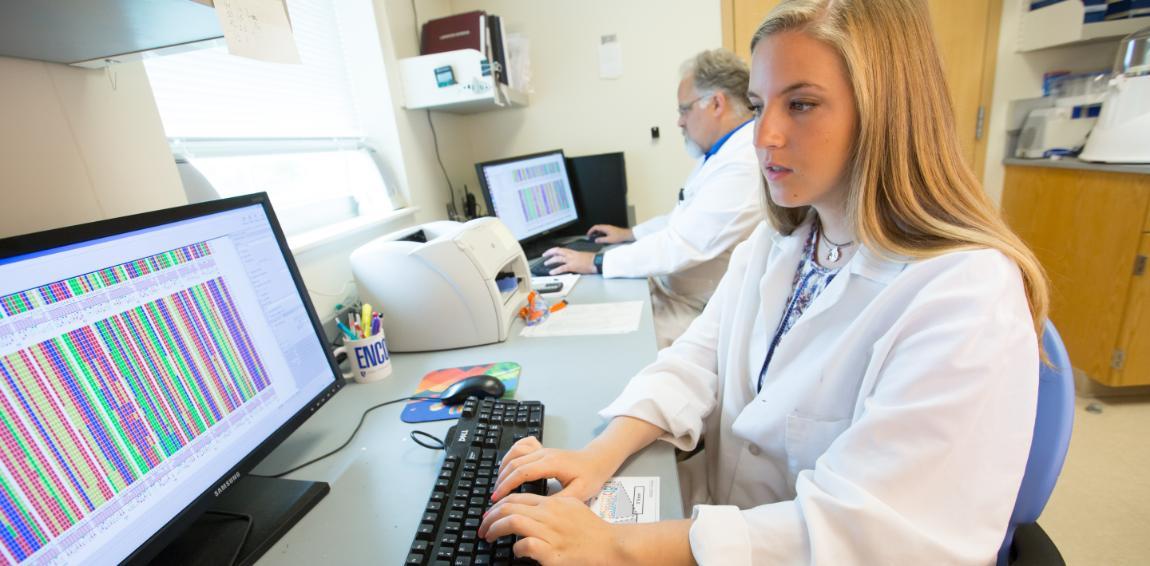Cat Gambill, like many college students, looks forward to the end of the week. But unlike many of her friends, it’s not the prospect of relaxation or road trips that gets her excited—it’s the anticipation of looking at spreadsheets.
"The end of the week is when I get to look at the DNA sequences we’ve mapped out," she said. "It’s almost like living in two worlds—in the first part of the week, I’m cloning DNA fragments and growing out colonies for testing, but at the end of the week I get to take a look at the data, and that’s where the scientific discovery happens."
Cloning DNA. Decoding a genome. Doesn’t sound like a typical summer for a college student. But Gambill isn’t a typical college student.
This summer, Gambill ’17, of Charlottesville, is working with Dr. Dale Beach, assistant professor of biology at Longwood, in an eight-week intensive research program. The pair is continuing research into a particular fungus—Pilobolous—that has interesting properties. The fungus’s spores often stay in a holding pattern after being eaten by an animal and thrive once they are back out in the world, but very little research has been done into its genome.
"At the end of the week I get to take a look at the data, and that’s where the scientific discovery happens."
Cat Gambill '17
On a typical Friday in early July, Gambill and Beach were perched on adjacent stools, looking at a spreadsheet on the computer screen in front of them. The different colors that cascaded down the rows and columns in diagonal patterns almost looked like a country’s flag.
"Again, we’re seeing two distinct bands," said Gambill. "It’s looking more and more like a diploid, and I think we can say pretty confidently that we figured that out. There’s still some more testing to do, but we’re getting really close."
All diploids have two complete sets of chromosomes, one from each parent. Humans are diploids, with 23 chromosome pairs. No one knew whether that was true about this particular fungus until Beach and Gambill figured it out.
But that discovery didn’t come easily. At first, Gambill had a hard time getting colonies of DNA to grow the way she wanted them to.
"When we slice out a gene from the DNA and clone it, we have to then grow those clones in a petri dish to have enough to study," she explained. "The antibiotic I was using just wasn’t growing them the way I wanted, so I had to figure out what to do."
That problem became a side experiment while the genomic sequencing was underway. She tested several different antibiotics to find one that grew her colonies better, but the additional work was welcome. "I just wanted to take care of my little guys," said Gambill.



Leave a Comment